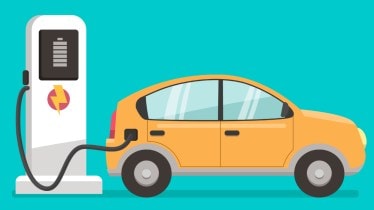By Nishchal Chaudhary
This year, in fiscal 2023-24, India should see over six lakh EVs being sold, a noteworthy achievement and a validation of the sure and steady march of the country towards securing a sustainable, affordable, and modern transport ecosystem for itself. It also helps that the Union Budget for this year has set out substantial initiatives, both in terms of FAME and PLI outlays as well as the Rs 20,000 crore earmarked for the Green Hydrogen Mission, to boost EV adoption and clean mobility. In addition to the FAME scheme, the Indian government has also implemented several policies to promote the adoption of e-scooters, including the implementation of charging infrastructure across the country. The government has set a target of having 500,000 EV charging stations across the country by 2025, making it easier for consumers to charge their e-scooters.
The other two players in this green equation are the private sector and the consumers. The automobile industry has pledged an amount of Rs 74,850 crore as against the governmental target estimate of Rs 42,500 crore spread over a period of five years starting from FY2023 towards EV development and manufacturing.
For consumers, especially the new age buyers and purchase influencers, it is a coming of age of sorts. Low polluting vehicles, environmental awareness and consciousness, convenience and cost effectiveness, all find expression in EVs. With compact vehicles, especially electric scooters, the Gen Y and millennials are now fulfilling their two key drives: zest and responsibility. Indeed, with the way our urban centres are fast becoming transport challenges and living gas-chambers, EVs are sure to provide answers to the questions of green mobility and how it can resolve our urban congestion and larger environmental issues.
Green mobility, or sustainable transportation, refers to modes of transportation that have less negative impact on the environment, reduce energy consumption, and promote the health and well-being of individuals and communities. The recent global focus on green mobility has become increasingly important due to the negative effects of traditional transportation methods, such as carbon emissions, air pollution, and traffic congestion.
Using clean and green fuels has numerous benefits, including reducing greenhouse gas emissions, promoting sustainable energy use, and improving air quality. Electric vehicles, public transportation, bicycles, and walking are all examples of green mobility that can help reduce the amount of greenhouse gas emissions produced by conventional transportation relying on ICE.
Traditional transportation methods can negatively impact public health while green mobility options, such as electric vehicles, bicycles, and public transportation, produce little to no air pollution, making them healthier and safer for individuals and communities. According to the World Health Organisation, India has some of the world’s most polluted cities, and air pollution is responsible for over one million premature deaths annually.
Electric scooters, on the other hand, produce no tailpipe emissions and can help reduce air pollution. In fact, a recent study found that replacing traditional scooters with e-scooters in Delhi could reduce air pollution by up to 20 percent.
Green mobility also addresses many of the challenges faced by urban areas today, including traffic congestion, limited parking, and increased demand for public transportation. As cities continue to grow, the number of vehicles on the road is increasing, leading to traffic congestion and longer commute times. Electric scooters can help solve this challenge by reducing the number of vehicles on the road, particularly during peak traffic hours.
According to a recent study, electric scooters can reduce traffic congestion by up to 15 percent in India’s major cities. As more people choose sustainable transportation options, the demand for public transportation is likely to increase, making it more feasible to invest in and improve public transportation systems.
One of the biggest advantages of using green mobility is its appeal to millennials and Generation Y. First, younger generations are more environmentally conscious and aware of the negative impact of traditional transportation methods on the environment. They are more likely to choose green mobility options to reduce their carbon footprint and contribute to a more sustainable future. Second, green mobility options are often more cost-effective than traditional transportation methods. For example, using a bicycle or walking requires no fuel and little maintenance, making it a more affordable option for transportation. Finally, green mobility often promotes a healthier lifestyle, which is important to younger generations. Bicycling, walking, and using public transportation can help individuals stay active and reduce their risk of obesity and other health problems.
Electric scooters, in particular, as core components of an EV delivery ecosystem, can play a significant role in decongesting Indian roads. With the majority of the Indian population using two-wheelers as their primary mode of transport, electric scooters offer a cleaner and cost-effective alternative. Private sector players can work towards developing electric scooters with better range, performance, and affordability, making them a more attractive option for consumers.
There is no denying the fact that the private sector has a critical role to play in helping India march towards sustainable transport solutions. Private sector players can invest in R&D, manufacturing, and deploying EVs across the country, which will help reduce the cost of EVs, accelerate their adoption, and create job opportunities in the country. The involvement of the private sector in the EV market can help address the issue of air pollution and decongest Indian roads. With the Indian government’s support and the private sector’s involvement, India can transition towards a more sustainable and cleaner transportation sector with the help of green mobility.
The author is the Founder of BattRE Electric Mobility.
Disclaimer: Views expressed are personal and do not reflect the official position or policy of Financial Express Online. Reproducing this content without permission is prohibited.
